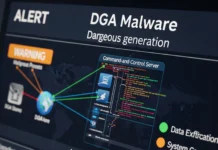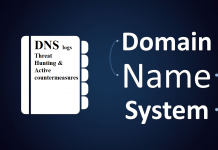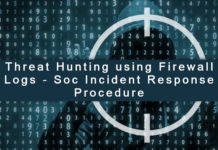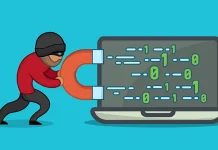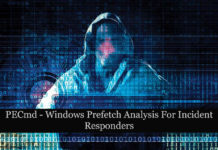In the ever-evolving landscape of cybersecurity, anonymity has become both a shield and a weapon. While legitimate users rely on VPNs and proxies to maintain privacy while streaming, browsing, or working remotely, cybercriminals exploit the same technologies to conceal malicious activities. This duality creates a complex challenge for security analysts and investigators, as the very tools meant to protect user privacy can also empower threat actors to evade detection, mask identities, and obscure the origins of their attacks.
Anonymity to Cybercrime
To most threat players, anonymity is the initial gateway of defense. VPNs and proxy servers enable them to direct internet traffic to several servers, making it almost impossible to determine where they are or who they are. These technologies conceal the IP address of the attacker and blend their activities with the noise of network traffic in the world. Layers of encrypted tunnels and proxy chains make it difficult for law enforcement or cybersecurity experts to attribute malicious behavior to its origin.
There is time and flexibility for the attackers. They might be engaged in phishing, setting up ransomware, or botnets, but VPNs and proxies enable them to conduct their business behind the veil of anonymity. Through these services, hackers can share attacks across a wide geographical area, assume the identities of honest users, and evade automatic surveillance systems that detect suspicious behaviors.
VPNs as Evasion and Control Means
VPNs were created with the purpose of maintaining privacy, and they are effective in this regard, but in the hands of malicious individuals, they become highly effective evasive devices. Several more sophisticated persistent threat (APT) teams and organized internet crime rings utilize company VPN packages or create their own personal networks to coordinate massive attacks. These networks help them evade geolocation filters, exploit vulnerabilities in trusted IP ranges, and maintain long-lasting access with minimal attention.
In addition, a few attackers switch between VPN services or implement multi-hop settings, which direct traffic across multiple countries simultaneously. This method is commonly referred to as VPN chaining, and it renders digital forensics an exponentially more difficult task. In tracing a breach, incident responders may find that the same command-and-control (C2) server used by an attacker is served behind a chain of VPN endpoints that are swapped out hourly; thus, traditional IP-based attribution would be of little use.
The Role of Proxies in Obfuscation
Where VPNs encode communication and conceal IP addresses, proxies are used to facilitate communication between the attacker and the target. Automated bot traffic, brute-force attacks, and web scraping are some of the activities typically covered using proxies. Cybercriminals, in turn, prefer using residential proxies because they utilize authentic user IP addresses, thereby making their traffic appear legitimate. They can be proxies acquired via hijacked devices or malicious computer programs that make victims unknowingly developers of bigger botnets.
Servers that administrators have not secured also fall prey to the attackers, who will reroute traffic using open proxies. They are able to spread their digital footprint through thousands of IP addresses by bypassing dozens of proxy layers. This complicates the issue of intrusion detection systems in distinguishing between malicious and benign activity, particularly when the attackers are on networks that are identified as trustworthy.
How SOC Teams Detect and Respond
This is a form of digital camouflage that SOCs have to contend with at all times. IP analysis is insufficient to detect the malicious use of VPNs and proxies; however, behavioral analytics, pattern recognition, and correlation with threat intelligence information are necessary. Indications of abnormal user behavior to be sought by analysts include abnormal and unusual data transfers, unusual login times, and the use of IP addresses that can be related to VPN or proxy services.
Machine learning devices are becoming increasingly useful in identifying tendencies that humans may overlook. For example, a SOC can observe that an internal user logs into the system from several different countries within a short period, a definite indication that a proxy/VPN is in use. With these events matched to network traffic logs, an analyst can alert about possible insider threats or compromised accounts. Nevertheless, the issue remains severe, and most legitimate users also require the assistance of VPNs to work remotely, which complicates the ability to identify malicious intent and the need for everyday use of the service.
Attribution Ethical and Legal Problems
VPNs and proxies create complicated ethical and legal concerns for cybersecurity experts. As much as investigators want to trace the attack to its source, they must be guided by privacy policies and global regulations that ensure user anonymity. A subpoena may not bring in any data because even VPN providers have a no-logs policy, which is usually very strict. In certain jurisdictions, such poor collaboration enables computer criminals to operate with relative impunity.
The Future of Detection and Accountability
Defensive technologies must change as threat actors evolve. The new approaches that are being developed, including AI-based network forensics, high-precision geolocation analytics, and decentralized identity tracking, are closing the gap between privacy and responsibility. Other organizations are also experimenting with dynamic adaptive trust models that dynamically assess the risk of users, but not solely based on IP reputation.
Conclusion
VPNs and proxies have become an essential part of the world we live in today, providing privacy and security. However, they are also mediums of deceit when the cybercriminals employ them to cover their tracks. For every step taken towards anonymity, there must be a commitment to accountability and detection. As organizations enhance their security measures, it is essential to understand how such tools are exploited by those who aim to compromise security and trust in the digital ecosystem.





